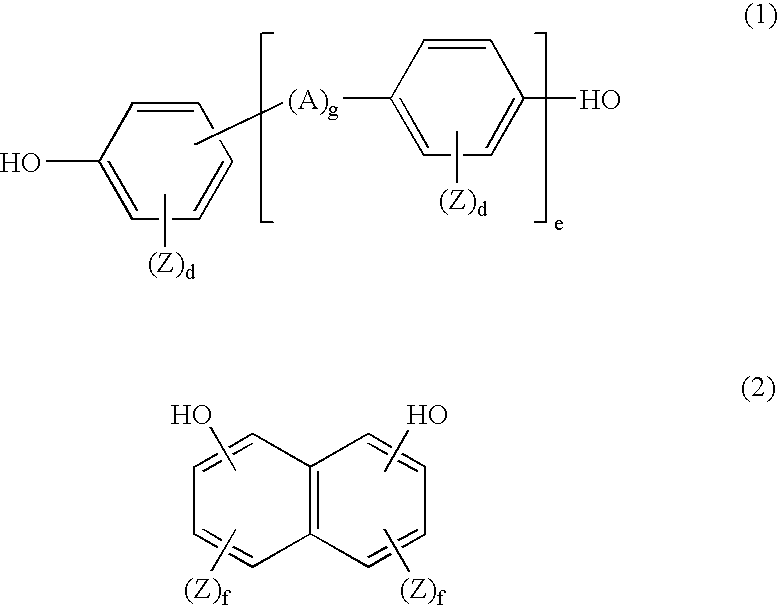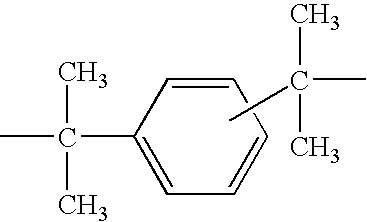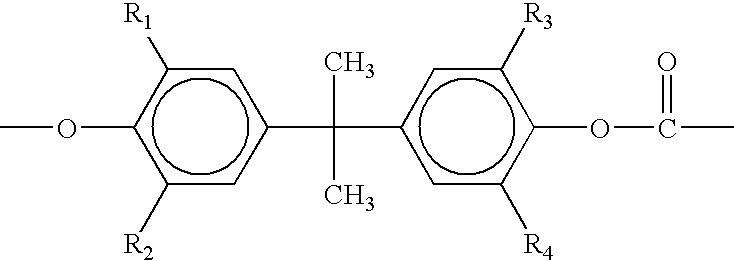Aircraft window
a technology for aircraft and windows, applied in the field of aircraft windows, can solve the problems of resins that meet the requirements of osu 100/100, and resins that do not meet the requirements of ul-94-v0,
- Summary
- Abstract
- Description
- Claims
- Application Information
AI Technical Summary
Benefits of technology
Problems solved by technology
Method used
Image
Examples
Embodiment Construction
[0008]The term polycarbonate as used in the context of the present invention refers to homopolycarbonates, copolycarbonates (including polyestercarbonates) and excluding certain copolycarbonates as described below. Polycarbonates are known and their structure and methods of preparation have been disclosed, for example, in U.S. Pat. Nos. 3,030,331; 3,169,121; 3,395,119; 3,729,447; 4,255,556; 4,260,731; 4,369,303, 4,714,746 and 6,306,507 all of which are incorporated by reference herein. The polycarbonates generally have a weight average molecular weight of 10,000 to 200,000, preferably 20,000 to 80,000 and their melt flow rate, per ASTM D-1238 at 300° C., is about 1 to about 65 g / 10 min., preferably about 2 to 35 g / 10 min. They may be prepared, for example, by the known diphasic interface process from a carbonic acid derivative such as phosgene and dihydroxy compounds by poly-condensation (see German Offenlegungsschriften 2,063,050; 2,063,052; 1,570,703; 2,211,956; 2,211,957 and 2,24...
PUM
| Property | Measurement | Unit |
|---|---|---|
| Fraction | aaaaa | aaaaa |
| Time | aaaaa | aaaaa |
| Weight ratio | aaaaa | aaaaa |
Abstract
Description
Claims
Application Information
 Login to View More
Login to View More - R&D
- Intellectual Property
- Life Sciences
- Materials
- Tech Scout
- Unparalleled Data Quality
- Higher Quality Content
- 60% Fewer Hallucinations
Browse by: Latest US Patents, China's latest patents, Technical Efficacy Thesaurus, Application Domain, Technology Topic, Popular Technical Reports.
© 2025 PatSnap. All rights reserved.Legal|Privacy policy|Modern Slavery Act Transparency Statement|Sitemap|About US| Contact US: help@patsnap.com



